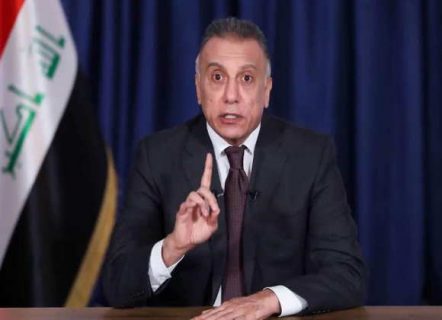Tehran and Baghdad: Parting Ways?

Iraq’s new prime minister wants to woo the US and Saudi Arabia, but Iran cannot be simply cast aside
A variety of divergent opinions have been voiced about Iranian Foreign Minister Mohammad Javad Zarif’s visit to Baghdad on Sunday and the message it was intended to send to the Iraqi leadership – especially Prime Minister Mustafa al-Kadhimi as he prepares to travel to Riyadh on his first foreign excursion since assuming office.
Kadhimi’s choice of the Saudi capital, rather than Tehran, as his first port of call on his maiden voyage, was itself a clear and carefully calculated message to Iran, as was his affirmation that Iraq will play a ‘balanced’ and ‘neutral’ role in the region under his leadership. This was seen to imply that Iran’s influence in Iraq, which increased dramatically after the 2003 US invasion, will not remain as dominant as it was under previous governments. This is a bold proposition but also a risky one, as underlined by the firing of Katyusha missiles at the Iraqi capital’s ‘Green Zone’ shortly after Zarif’s departure.
Zarif met with Kadhimi in the Green Zone. But he made a point of stopping first at the spot near Baghdad Airport where Gen. Qasem Soleimani, commander of the Iranian Revolutionary Guards’ Quds Force, was assassinated by a US drone in January. Zarif said a prayer for Soleimani and the other people murdered alongside him when their vehicle was blown up, including his comrade-in-arms and Iraqi Hashd ash-Shaabi leader Abu-Mahdi al-Muhandis. This gesture, in the view of many observers, seemed aimed at reminding Kadhimi and his government of this crime committed by the US on Iraqi soil and serving notice that the process of avenging it has barely begun.
The Iranians were certainly not pleased to see Kadhimi made prime minister after the popular protest movement forced their preferred incumbent Adel Abdulmahdi to resign and foiled efforts by two would-be successors – Muhammad Tawfiq Allawi and former Basra governor Asaad al-Aidani – to win parliamentary votes of confidence. But they still retain many powerful cards in Iraq, above all their allies in the Hashd ash-Shaabi. It has the capacity to turn Kadhimi’s wooing of the US – he is said to be planning to make Washington the final stop of his first foreign tour – into a hazardous undertaking.
Kadhimi wants Saudi Arabia, the US’ most powerful Arab ally, to become his government’s chief supporter and deliver on the offers of support it made to his predecessor Haidar al-Abadi when he visited Riyadh before his government was ousted in the 2018 elections. These included promises to provide Iraq with financial assistance, supply its electricity needs, invest in infrastructure projects, and open consulates in four major Iraqi cities. The pursuit of these objectives is understandable given the multitude of crises Iraq is living through. But in Iran, as well as in Iraq itself, there are those who do not want such a rapprochement and will try to impede it, as they see Saudi Arabia and the US as two of their main enemies. This puts a big damper on speculation that Kadhimi might try to mediate between Riyadh and Tehran to overcome some of their differences and bring about an entente between them – though nothing can be ruled out in politics.
Kadhimi’s bid to promote the idea of a ‘neutral’ Iraq reflects the long-held ambition of the American-backed ‘moderate’ wing of the country’s political elite to turn it away from Iran and its allies (such as Hezbollah). That is why the endeavor is fraught with dangers. Iraq is not a small and weak country like Lebanon which is under heavy US pressure to do the same. It is also Iran’s direct neighbor and the two are strongly bound by a multitude of close historic ties. Geography and proximity impose their own sets of rules that cannot be simply cast aside or bypassed.
https://www.raialyoum.com/index.php/tehran-and-baghdad-parting-ways/
 TheAltWorld
TheAltWorld 
0 thoughts on “Tehran and Baghdad: Parting Ways?”